When groundwater pumping exceeds the net natural recharge, the aquifer is said to be in overdraft. In the PrAMA the overdraft has grown from 4,500 acre-feet per year (afy) in 1999 to over 18,000 afy in 2012. Because we continue to pump far more water than is recharged (overdraft), we are depleting stored groundwater reserves. A good analogy is if you spent more money than you earned and depended on your declining savings account for the difference. The result is that groundwater levels throughout Chino Valley and the flow from Del Rio Springs continue to decline. CWAG has documented that domestic wells are already going dry on the western side of Chino Valley and along Williamson Valley Road on the edges of the aquifer. As the groundwater level continues to fall, the dry well zone will grow towards the center of the Little Chino Valley. ADWR projects that Del Rio Springs will be dry in 2025. Del Rio Springs, the historical headwaters of the Verde River, is now one-tenth of the original flow due to groundwater overdraft in the Little Chino Valley. As we continue to overdraft the Little Chino aquifer, the subsurface flow of groundwater to the Verde River will decline further. The USGS calculates that 14% of the flow from Verde Springs is water from the Little Chino Aquifer. For a more complete explanation, see the Big Chino menu item. The drying of Del Rio Springs is a glimpse into the future of the upper Verde River. Planned groundwater pumping projects in the Big Chino Valley will intercept groundwater destined for the river, just as pumping in Chino Valley now captures water from Del Rio Springs. Unmitigated groundwater pumping in the Big Chino Valley will eventually turn the first 25 miles of the upper Verde River into a dry wash, destroying some of the finest surviving riparian habitat in the southwest, exactly what is now occurring at Del Rio Springs.
Water Flow
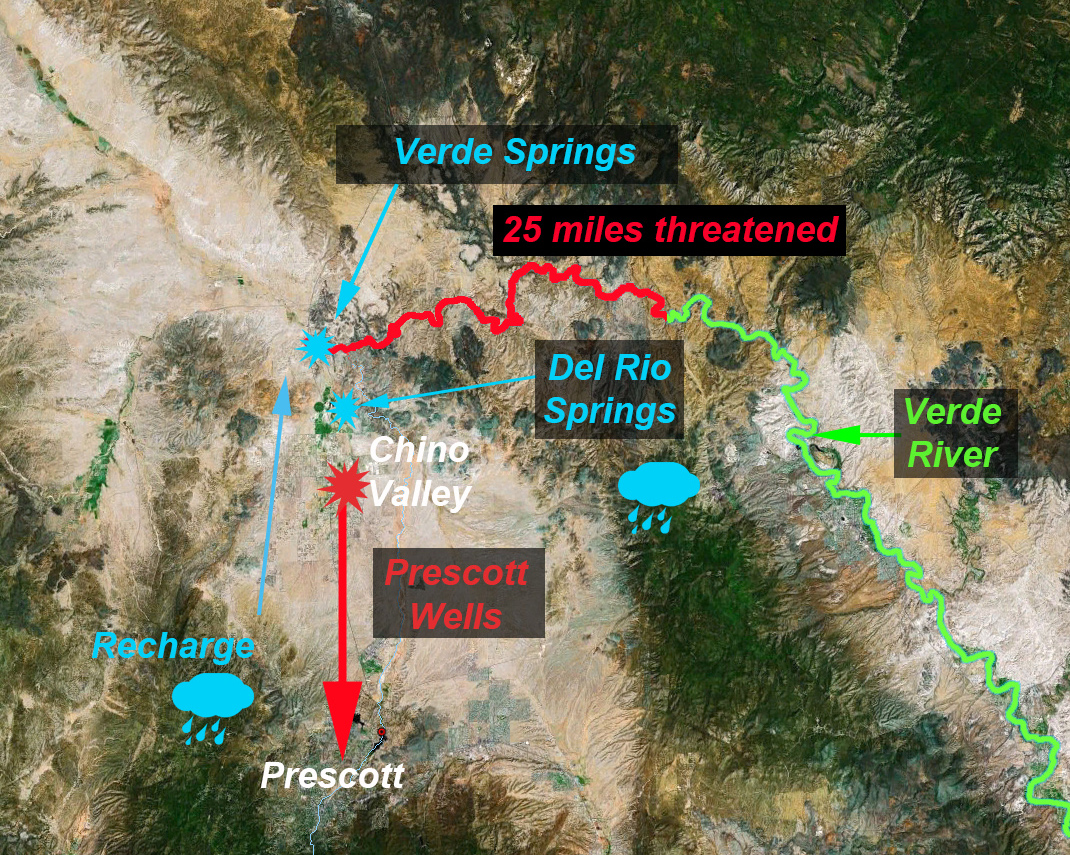
Just a small fraction of precipitation on the mountains surrounding Prescott percolates into the aquifers of the Little Chino Sub-basin. This groundwater flows north, downhill, passing beneath Chino Valley. A portion surfaces at Del Rio Springs. The remainder emerges as part of the Verde River base flow. Local cities rely on groundwater wells in Chino Valley, thus they capture and divert water naturally destined for Del Rio Springs and the Verde River.
Water Usage
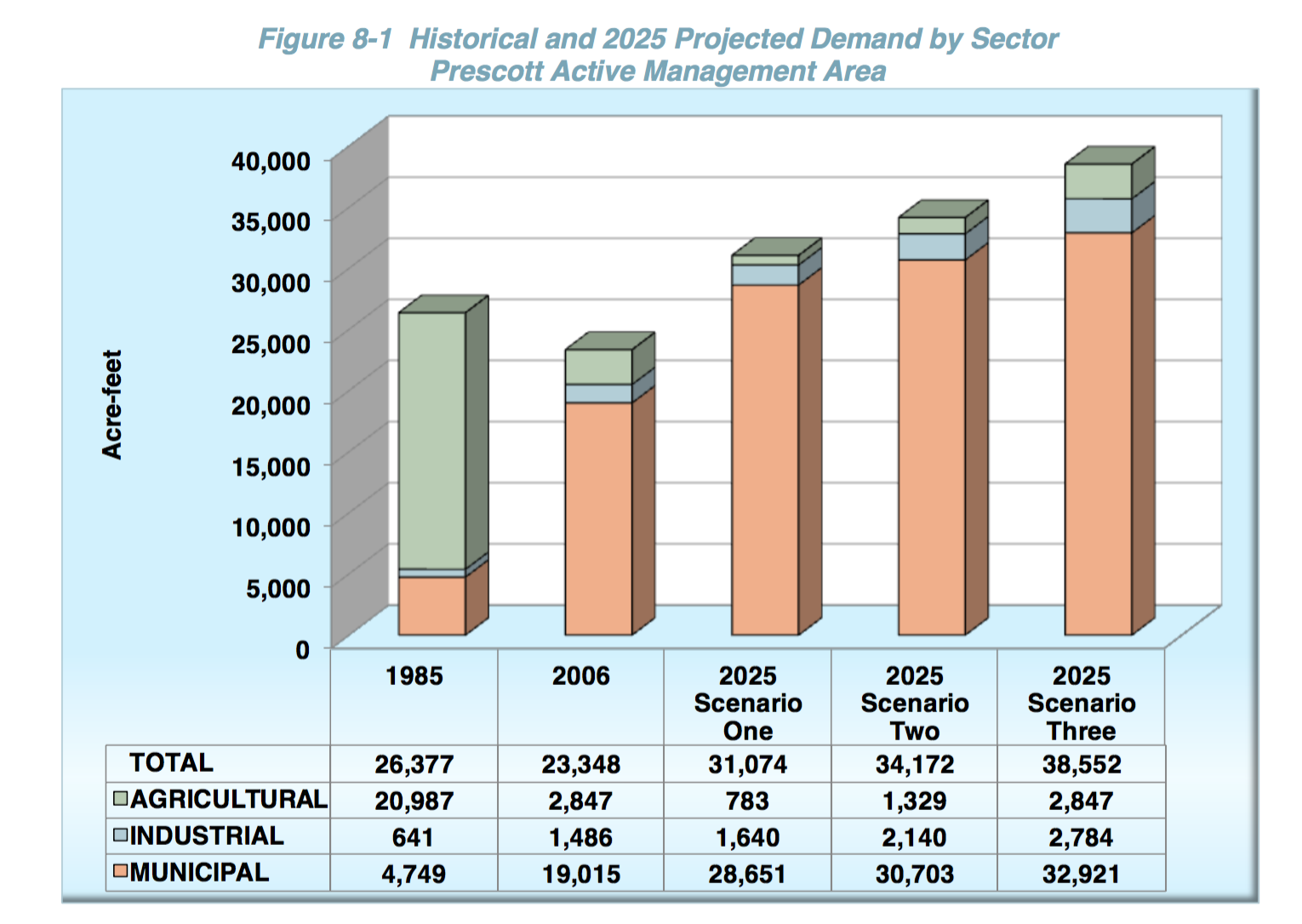
Groundwater is the primary source of water for all users in the Prescott Active Management Area (PrAMA), including Prescott, Chino Valley, parts of Prescott Valley, and residents in unincorporated Yavapai County. Surface water supplies are essentially non-existent. A small quantity of treated effluent is used on golf courses.
Overdraft
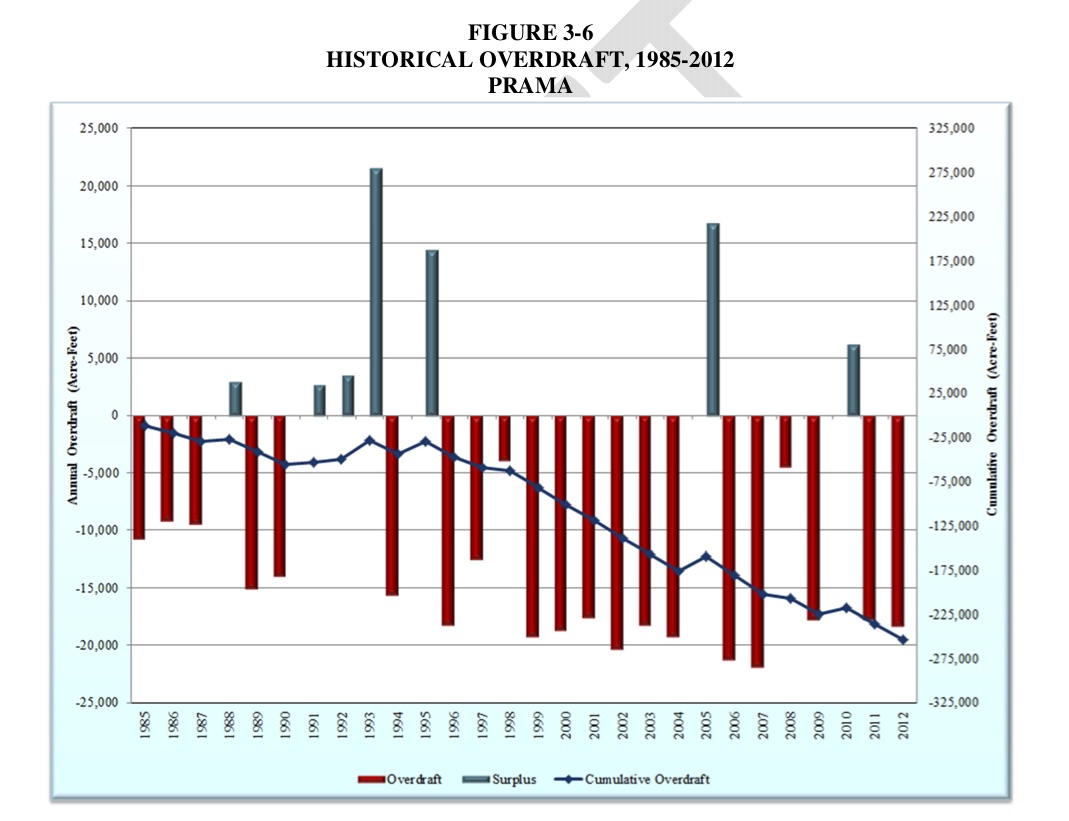
ADWR projects that by 2025 the total annual overdraft will exceed 20,000 afy. Graphic: Arizona Department of Water Resources (ADWR).
Graphic: Arizona Department of Water Resources (ADWR).
Wells Decline
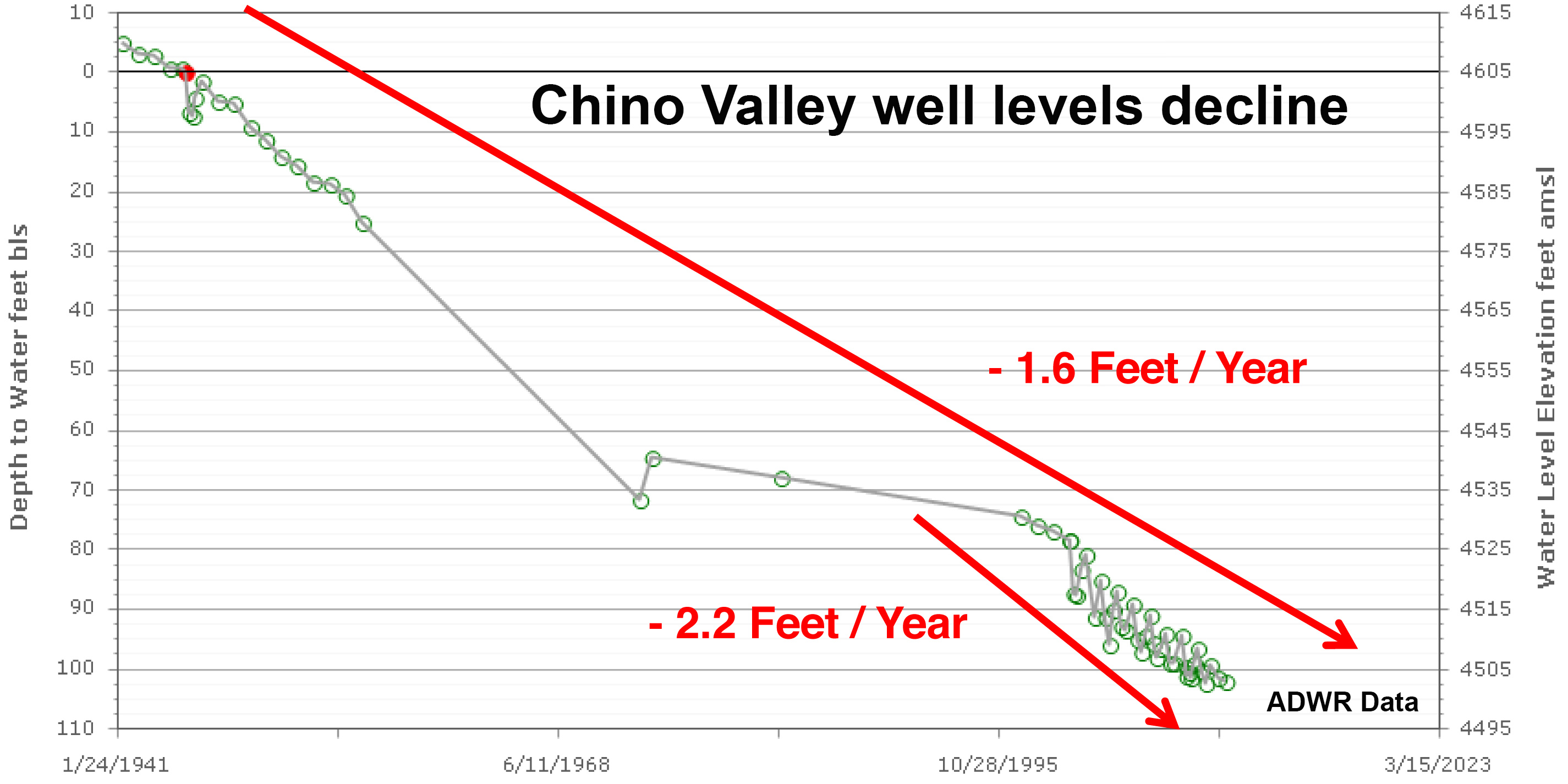
Effect on Del Rio Springs
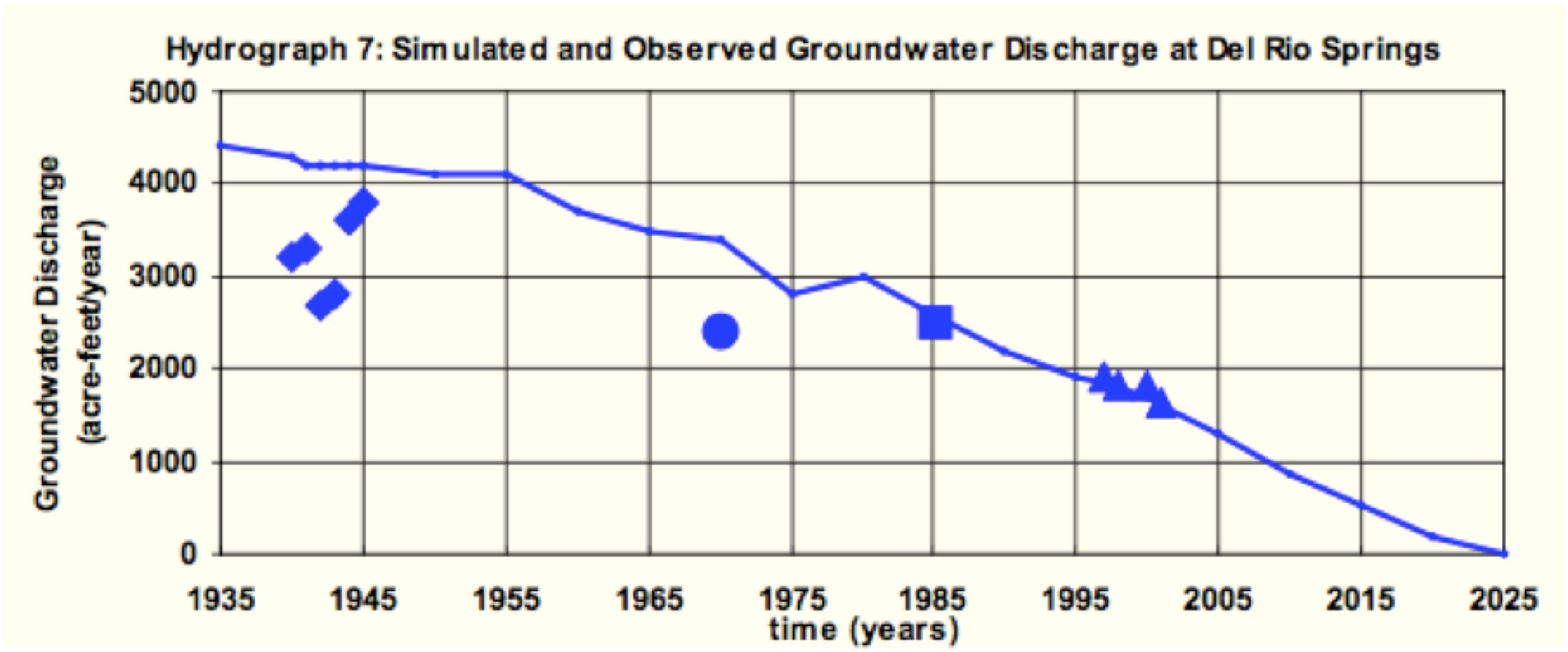
Currently, perennial flow in the river begins at Verde Springs, six miles downstream. We have already lost six miles of the Verde to groundwater pumping.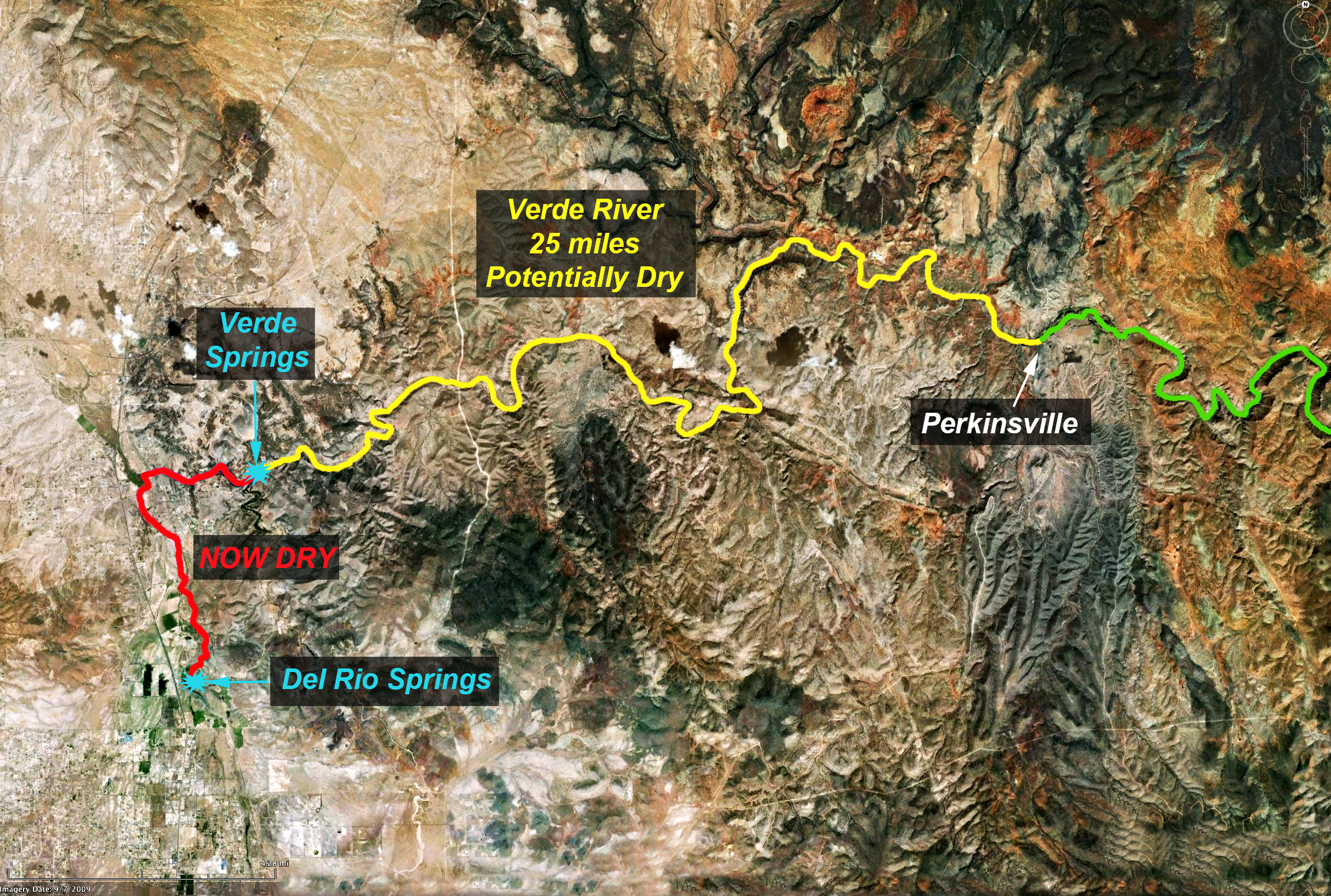
Effect on the Verde River
Future of the Verde
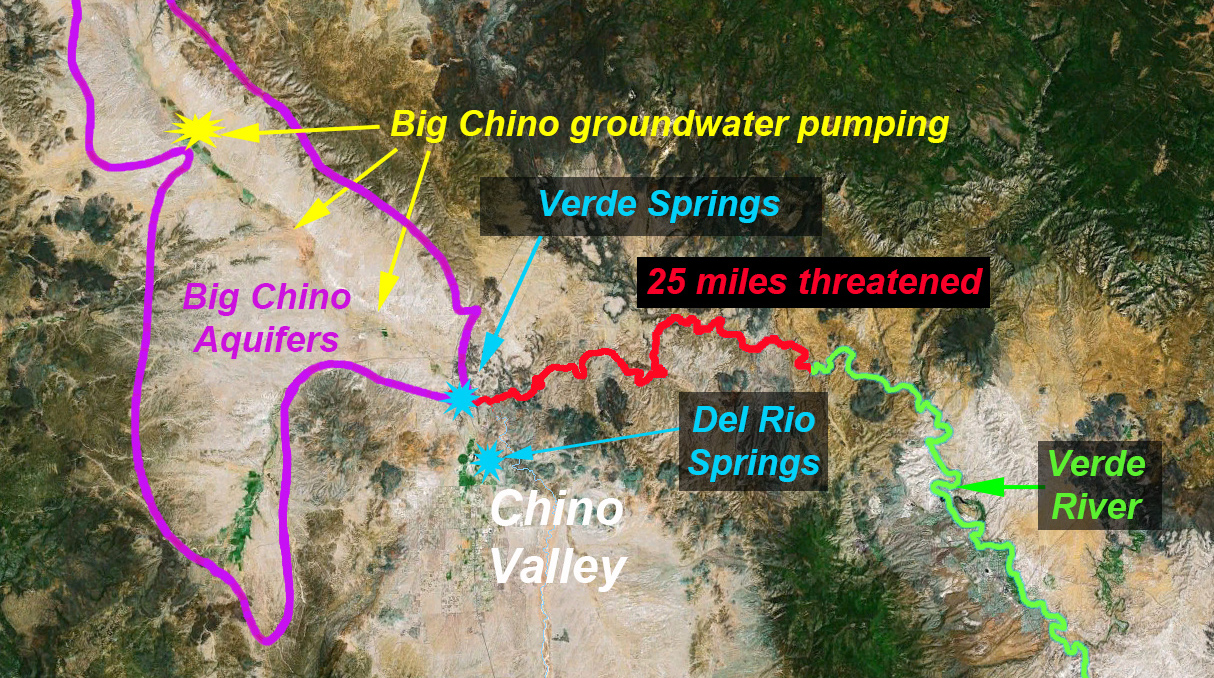
Groundwater Pumping - Little Chino Aquifer
Over the last 30 years, water demand by agriculture has declined from 80% to 12%. Municipal use has grown from 12% to 80% and is now the largest water-consuming sector. Data from Arizona Department of Water Resources (ADWR).
